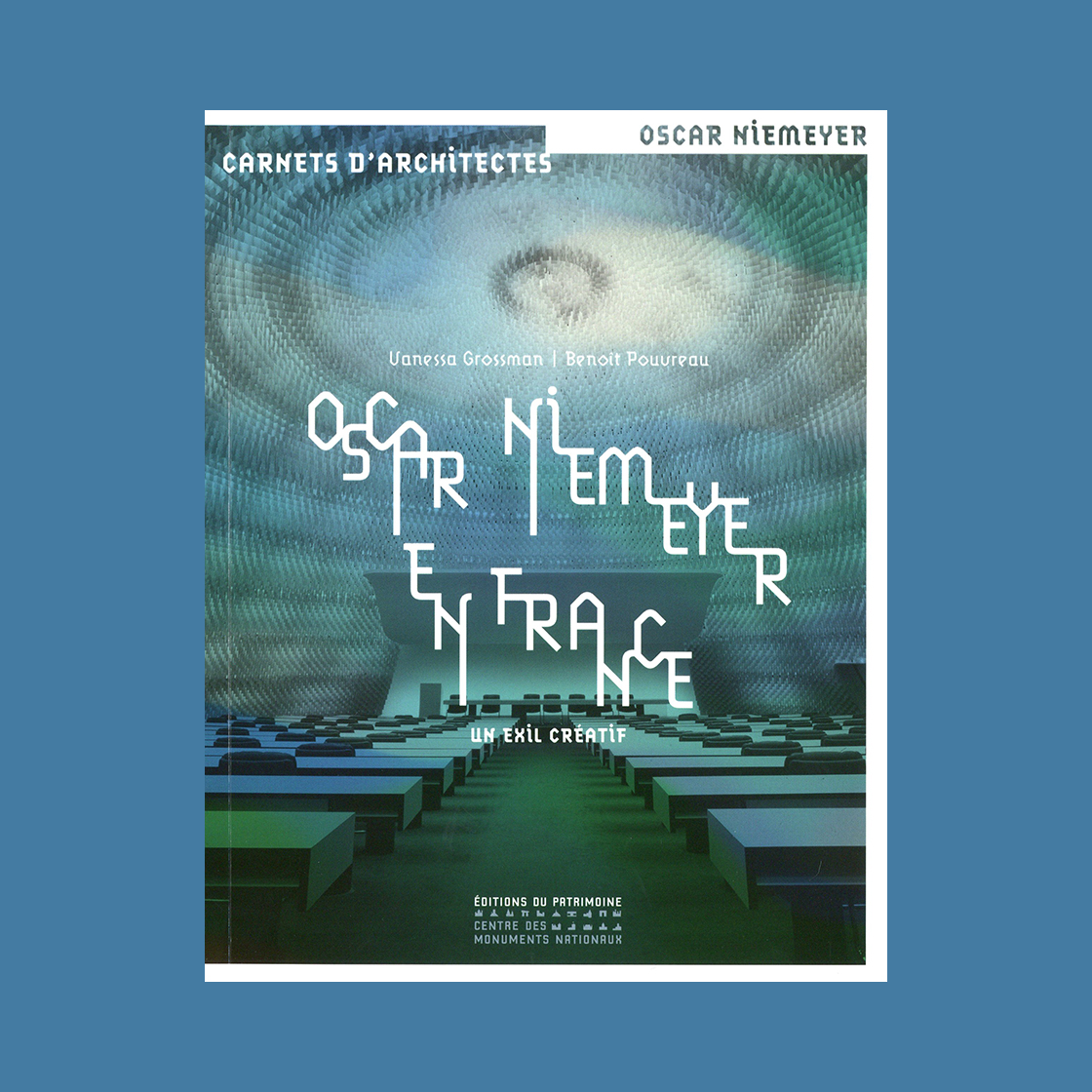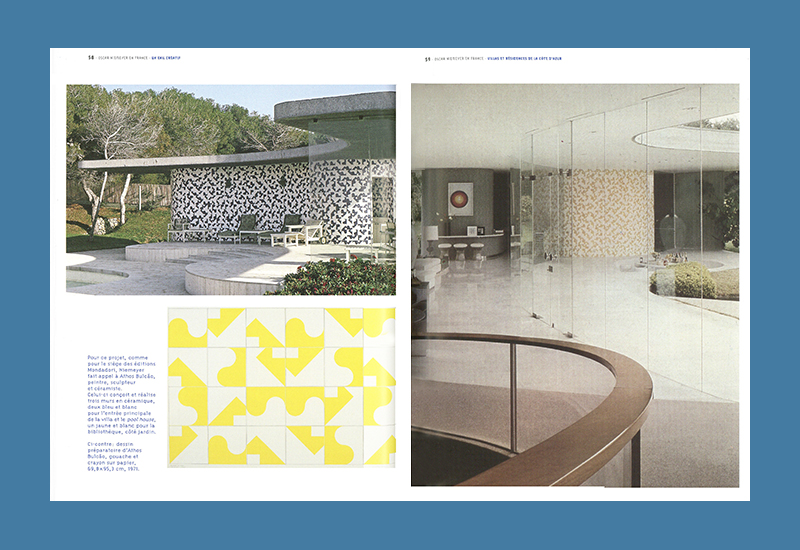Oscar Niemeyer en France: Un exil créatif
Carnets d'architectes
Vanessa Grossman, Benoît Pouvreau
Éditions du Patrimoine, 2021
€24,99
Décédé en 2012 à la veille de ses 105 ans, l’architecte brésilien Oscar Niemeyer est mondialement connu grâce à la notoriété de ses projets, Brasília notamment. Après une formation à l’École nationale des beaux-arts de Rio de Janeiro dans les années 1930, il entre dans l’agence de Lucio Costa, proche de Le Corbusier. Devenu indépendant, Niemeyer rencontre Juscelino Kubitschek, maire de Belo Horizonte ; quand celui-ci, devenu président, décide de la conception de la nouvelle capitale, Niemeyer en construit naturellement les principaux bâtiments publics. Avec l’inauguration de la ville en 1960, il devient une célébrité mondiale. Quatre ans plus tard, fuyant la dictature militaire, il trouve refuge en France où il reçoit plusieurs commandes émanant du Parti communiste français (PCF) et d’André Malraux, ministre des Affaires culturelles. Alors que Niemeyer ouvre une agence sur les Champs-Élysées, se succèdent nombre d’édifices emblématiques comme le siège du Comité central du PCF, à Paris, la Maison de la culture du Havre dite « Le Volcan », la Bourse départementale du travail de Bobigny, ou le siège de L’Humanité à Saint-Denis. Si l’architecte retourne régulièrement dans son pays natal, il ne s’y réinstallera définitivement qu’en 1981, peu d’années avant la fin de la dictature, fermant alors son agence à Paris.
Cette étude est l’occasion de mieux connaître ces projets et d’en découvrir d’autres moins connus, comme les résidences dans le midi (villa Nara Mondadori, Saint-Jean-Cap-Ferrat), les logements collectifs (Grasse, Dieppe ou Villejuif), ou les immeubles de bureaux (Renault à Boulogne-Billancourt, La Défense). En présentant croquis, plans, maquettes, photos et documents jamais publiés, provenant d’une myriade de fonds privés et publics français, et de la Fondation Oscar Niemeyer à Rio, l’ouvrage jette un éclairage unique sur son œuvre. Il montre notamment comment ses réalisations françaises ont marqué le développement de ses réseaux internationaux.
Sa riche personnalité le vit également dessiner des meubles en France pour la première fois, concevoir une scène éphémère pour la Fête de L’Humanité, participer au jury qui choisit les jeunes Piano et Rogers pour le Centre Pompidou, ou encore imaginer une salle de spectacles amovible pour la Cour carrée du Louvre. Mais le livre donne surtout un coup de projecteur sur le parcours international de celui qui fut un des derniers grands architectes modernes du XXe siècle.
ENG.: Brazilian architect Oscar Niemeyer, who died in 2012 on the eve of his 105th birthday, is known worldwide thanks to the notoriety of his projects, Brasília in particular. After training at the National School of Fine Arts in Rio de Janeiro in the 1930s, he joined Lucio Costa’s agency, close to Le Corbusier. Having become independent, Niemeyer meets Juscelino Kubitschek, mayor of Belo Horizonte; when the latter, having become president, decides on the design of the new capital, Niemeyer naturally builds its main public buildings. With the city’s inauguration in 1960, he became a world celebrity. Four years later, fleeing the military dictatorship, he found refuge in France where he received several commissions from the French Communist Party (PCF) and André Malraux, Minister of Cultural Affairs. While Niemeyer opened an agency on the Champs-Élysées, a number of emblematic buildings followed one another such as the headquarters of the PCF Central Committee in Paris, the Maison de la culture du Havre known as “Le Volcan”, the departmental labor exchange of Bobigny, or the headquarters of L’Humanité in Saint-Denis. Although the architect returned regularly to his native country, he did not settle there definitively until 1981, a few years before the end of the dictatorship, then closing his office in Paris.
ENG.: This study is an opportunity to get to know these projects better and to discover others less known, such as residences in the south (villa Nara Mondadori, Saint-Jean-Cap-Ferrat), collective housing (Grasse, Dieppe or Villejuif), or office buildings (Renault in Boulogne-Billancourt, La Défense). By presenting sketches, plans, models, photos and unpublished documents, coming from a myriad of French private and public funds, and the Oscar Niemeyer Foundation in Rio, the book sheds a unique light on his work. It shows in particular how its French achievements have marked the development of its international networks.
His rich personality also saw him design furniture in France for the first time, design an ephemeral stage for the Fête de L’Humanité, participate in the jury that chooses the young Piano and Rogers for the Center Pompidou, or even imagine a performance hall. removable for the Louvre square courtyard. But above all, the book shines the spotlight on the international career of the man who was one of the last great modern architects of the 20th century.
ISBN: 9782757706572









